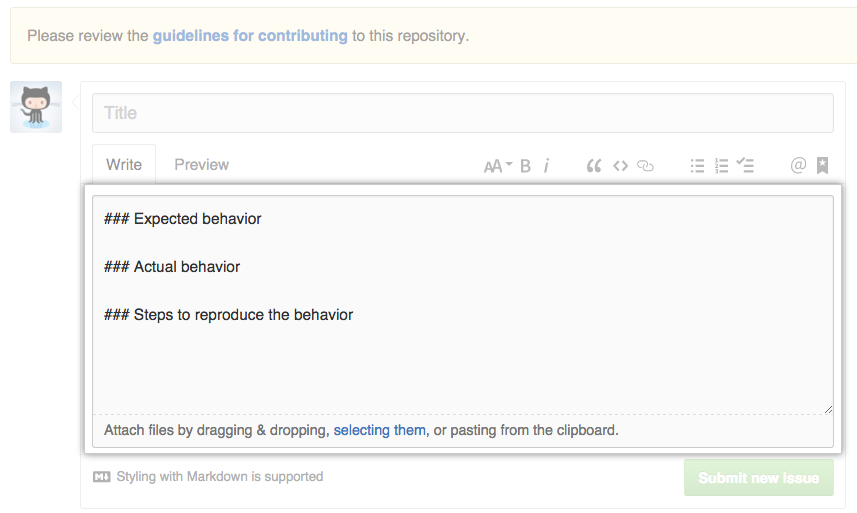With issue and pull request templates, you can customize and standardize the information you'd like contributors to include when they open issues and pull requests in your repository.
After you create issue and pull request templates in your repository, contributors can use the templates to open issues or describe the proposed changes in their pull requests according to the repository's contributing guidelines. For more information about adding contributing guidelines to a repository, see "Setting guidelines for repository contributors."
Issue templates
When you add an issue template to your repository, project contributors will automatically see the template's contents in the issue body.

You must create templates on the repository's default branch. Templates created in other branches are not available for collaborators to use. You can store your issue template in the repository's visible root directory, the docs folder, or the hidden .github directory. Issue template filenames are not case sensitive, and can have an extension such as .md or .txt.
For more information, see "Manually creating a single issue template for your repository."
Pull request templates
When you add a pull request template to your repository, project contributors will automatically see the template's contents in the pull request body.

You must create templates on the repository's default branch. Templates created in other branches are not available for collaborators to use. You can store your pull request template in the repository's visible root directory, the docs folder, or the hidden .github directory. Pull request template filenames are not case sensitive, and can have an extension such as .md or .txt.
For more information, see "Creating a pull request template for your repository."